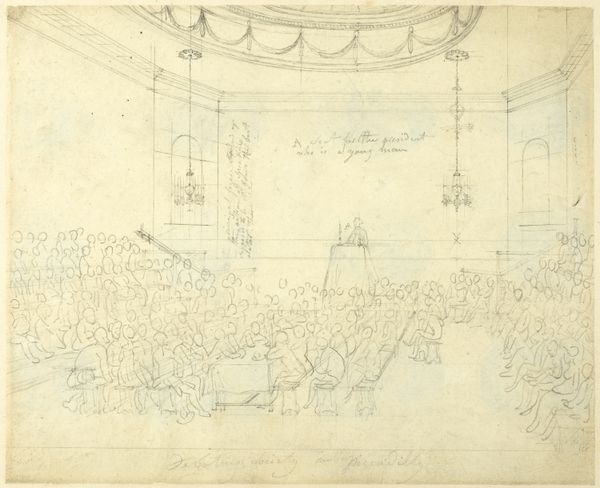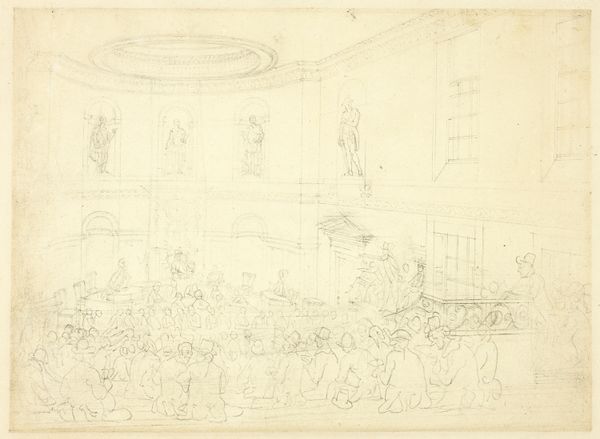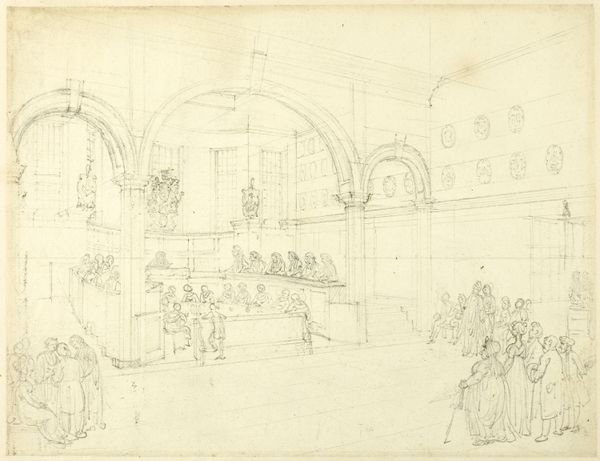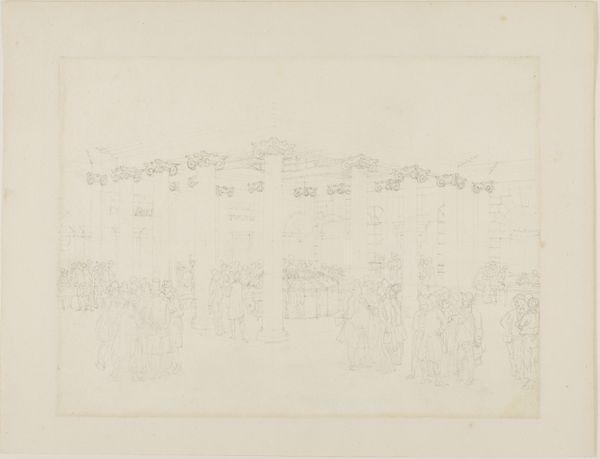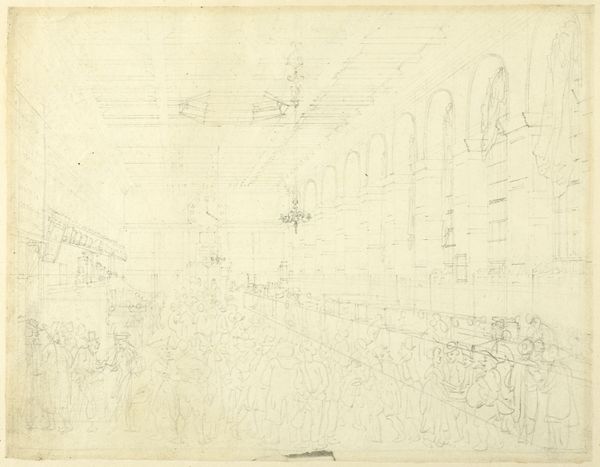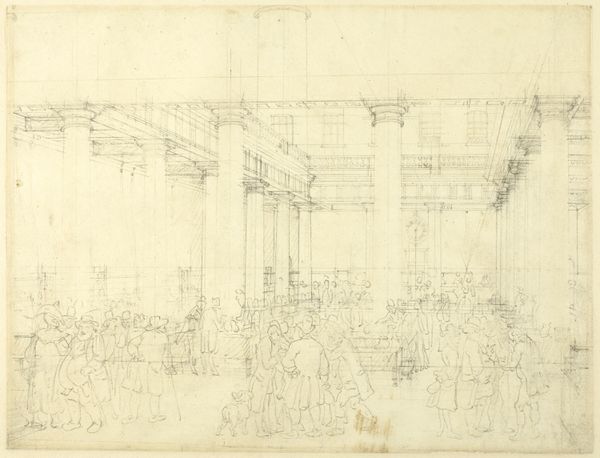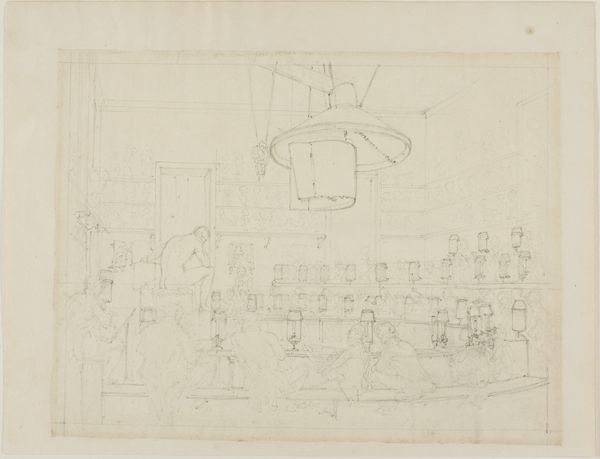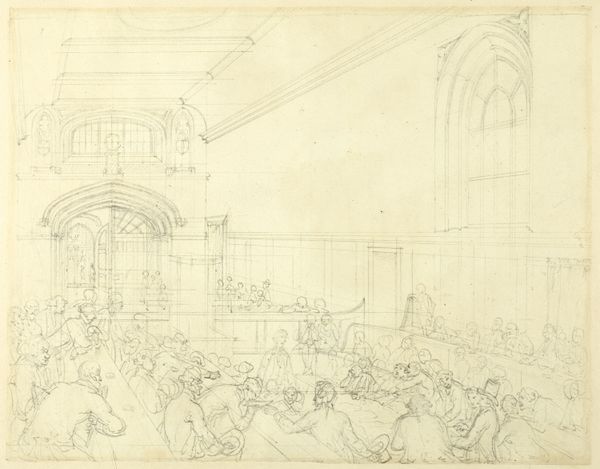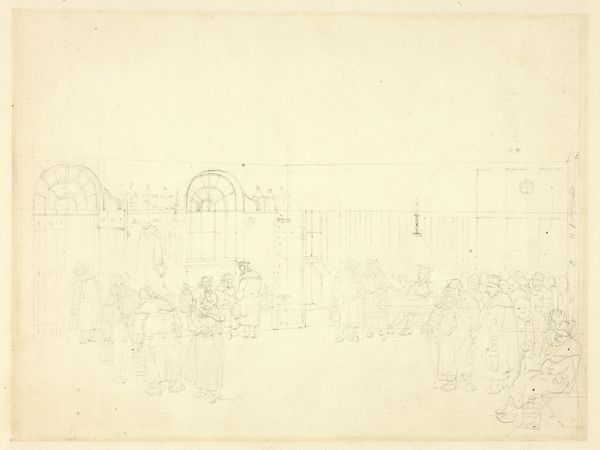
Study for Quaker's Meeting, from Microcosm of London c. 1809
0:00
0:00
drawing, print, etching, paper, pencil, graphite
#
portrait
#
architectural sketch
#
drawing
#
medieval
# print
#
etching
#
etching
#
paper
#
form
#
geometric
#
pencil
#
line
#
graphite
#
history-painting
Dimensions: 197 × 260 mm
Copyright: Public Domain
Editor: Here we have Augustus Charles Pugin’s "Study for Quaker's Meeting, from Microcosm of London," dating from around 1809. It's a pencil, graphite, and etching on paper, currently housed at the Art Institute of Chicago. It almost feels like a fly-on-the-wall perspective, peering into this Quaker meeting. What draws your attention when you look at it? Curator: The fascinating aspect of this sketch lies in its portrayal of a Quaker meeting within the framework of early 19th-century London. Pugin, known for his architectural interests, presents not just the individuals, but also the very space where they gathered. How do you think the architectural details reflect the Quaker values of simplicity and community? Editor: I see the simplicity in the unadorned space, very functional and without ostentation. I guess I never thought about architecture expressing values. Curator: Precisely. And it's critical to understand this in relation to the 'Microcosm of London' series. This was a time of social upheaval and reformation. Think of the visual politics at play – Pugin, through this print, presents the Quakers not merely as a religious group, but as an integral part of London's diverse social fabric. Do you consider that this portrayal challenges or reinforces existing power structures? Editor: That's interesting... I hadn’t considered the possible subtle political commentary. It feels fairly observational. I suppose depicting them at all grants them a kind of visibility they might not have otherwise had. Curator: Exactly. And visibility, especially at this time, held immense political weight. Reflect on the role of art as a document, a piece of social record. Editor: I always saw art as self-contained and precious, but it’s really so rooted in history and power, isn’t it? I'll definitely look at art differently from now on! Curator: That's wonderful. Seeing art within its historical and political framework offers an entirely different level of understanding and appreciation.
Comments
No comments
Be the first to comment and join the conversation on the ultimate creative platform.
